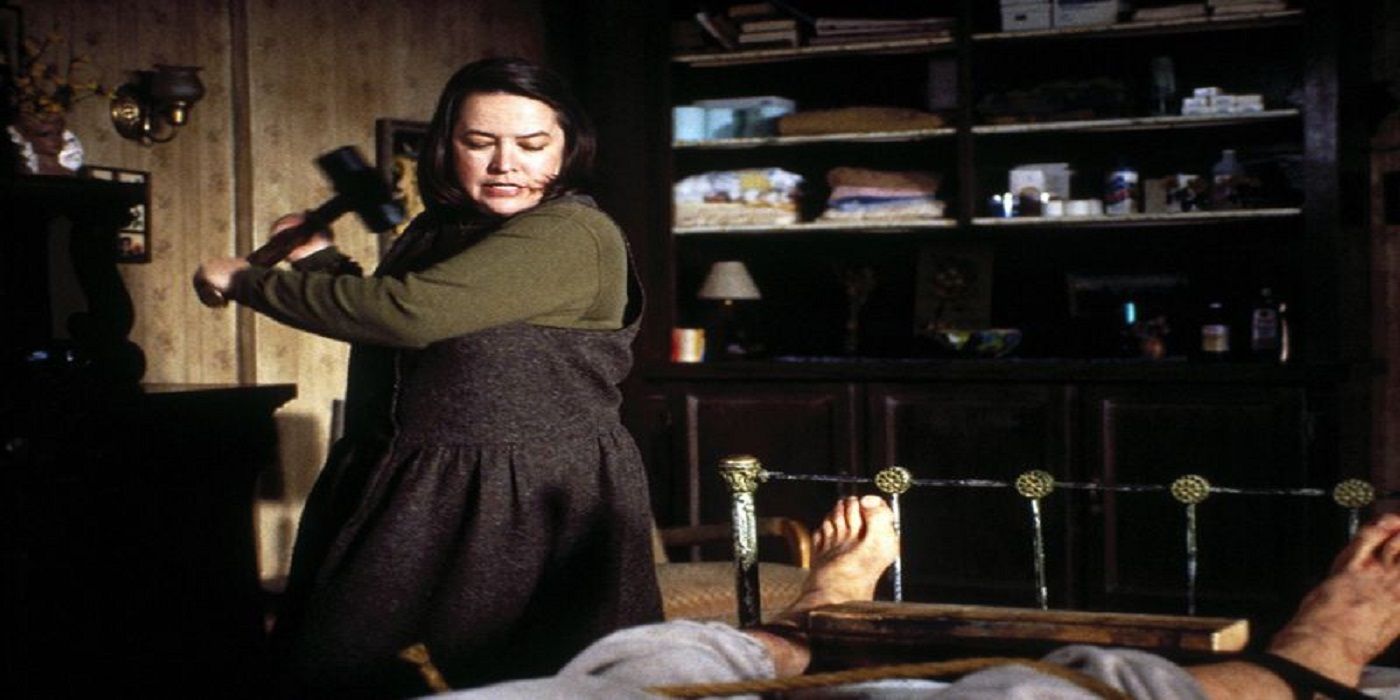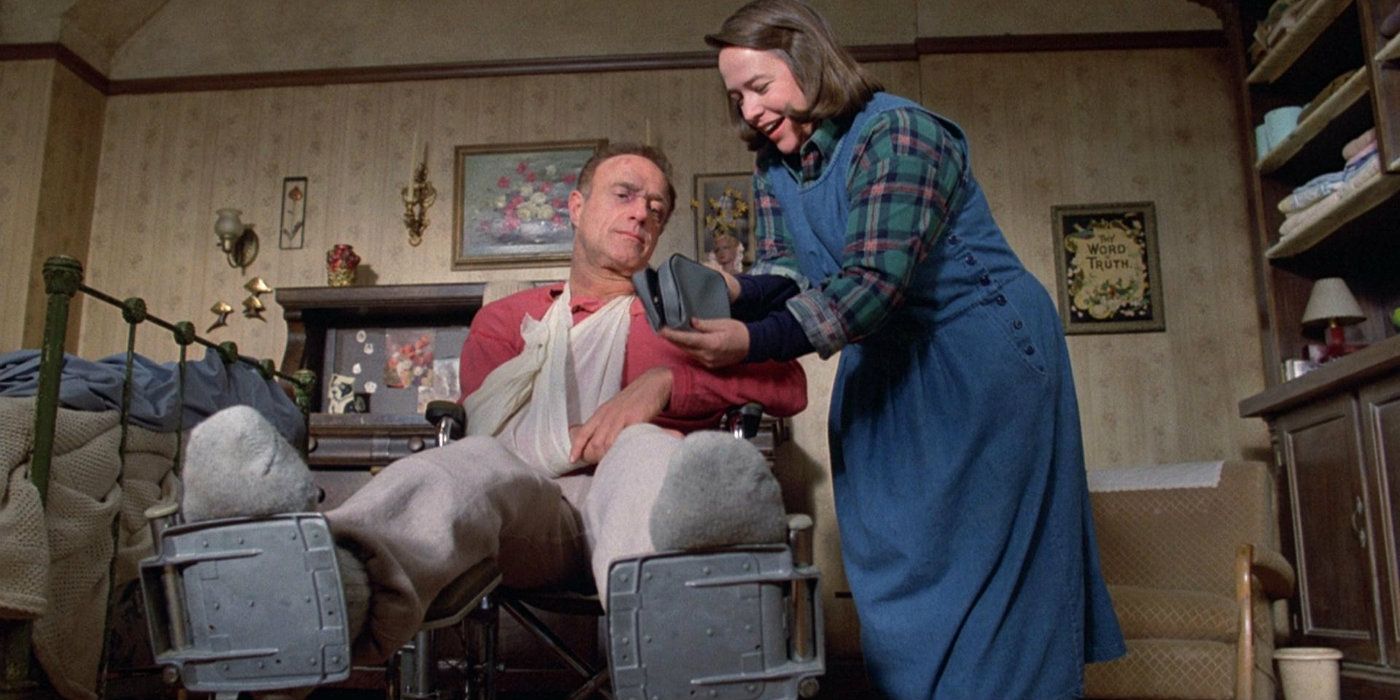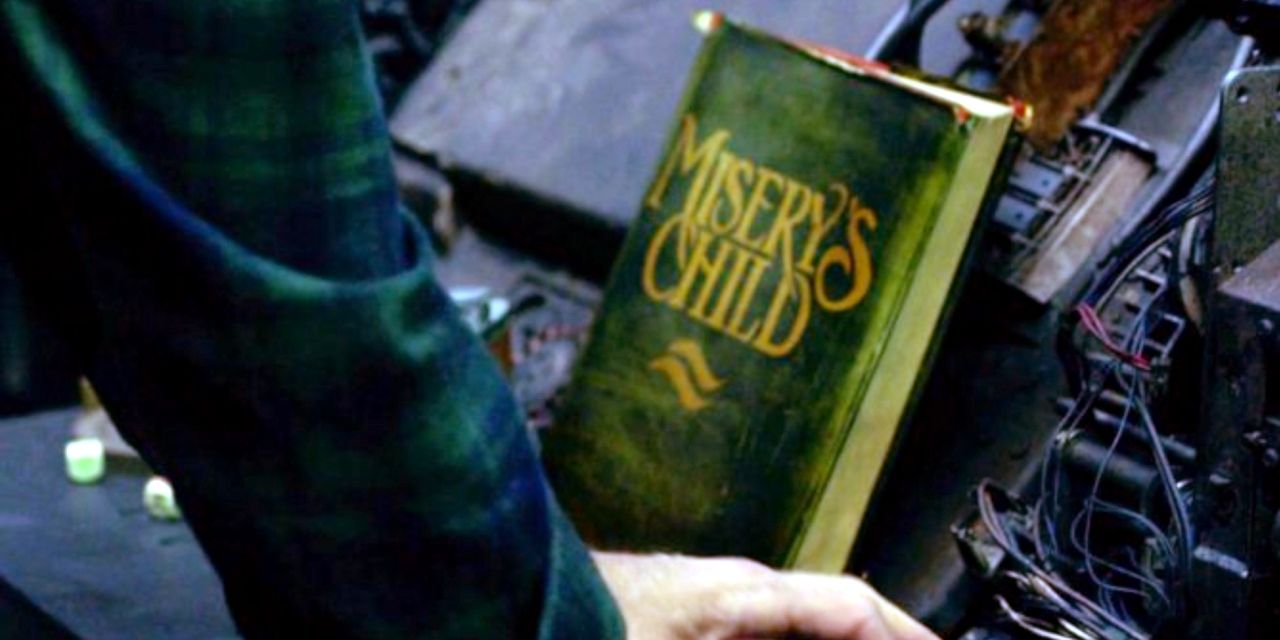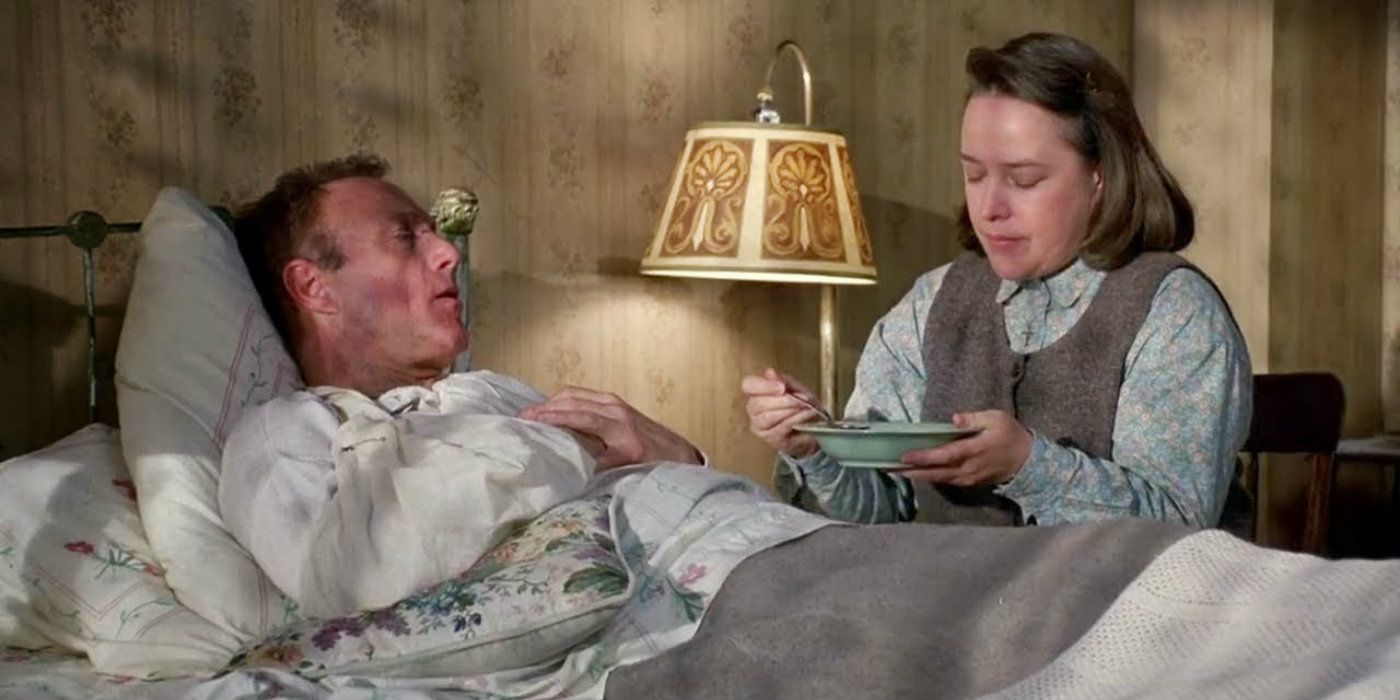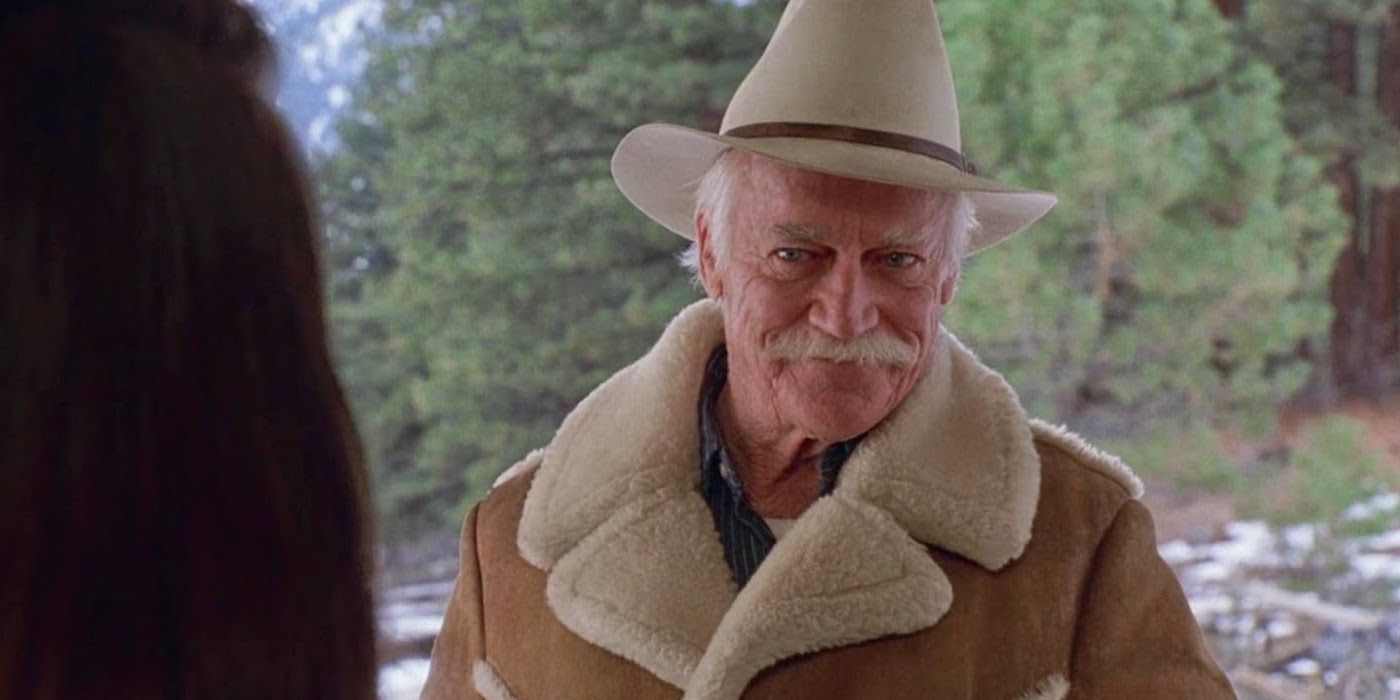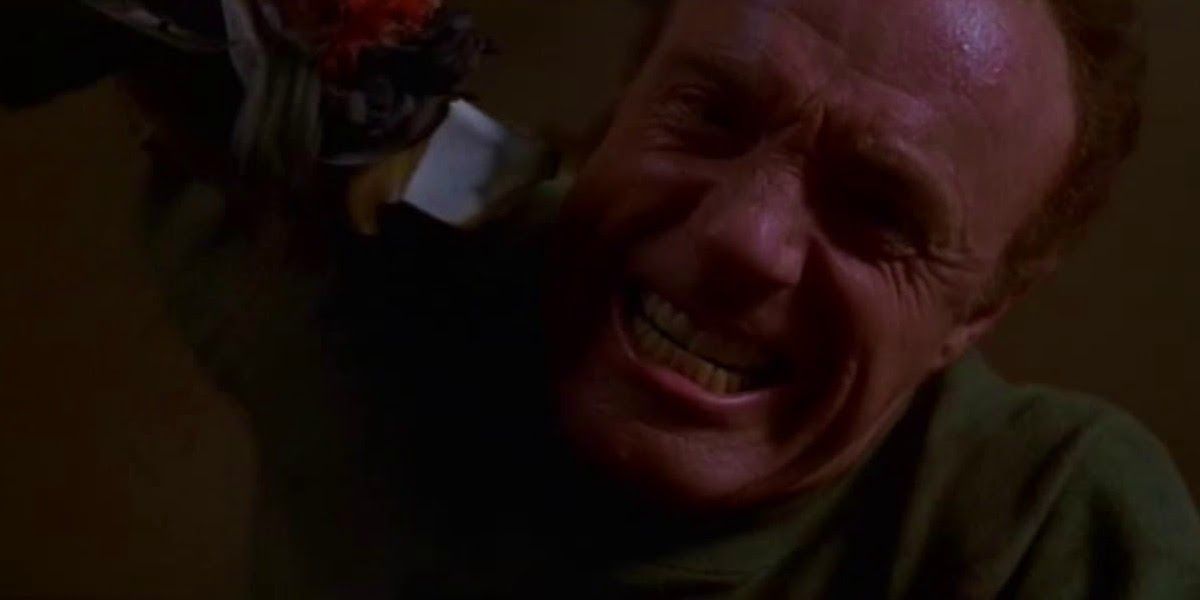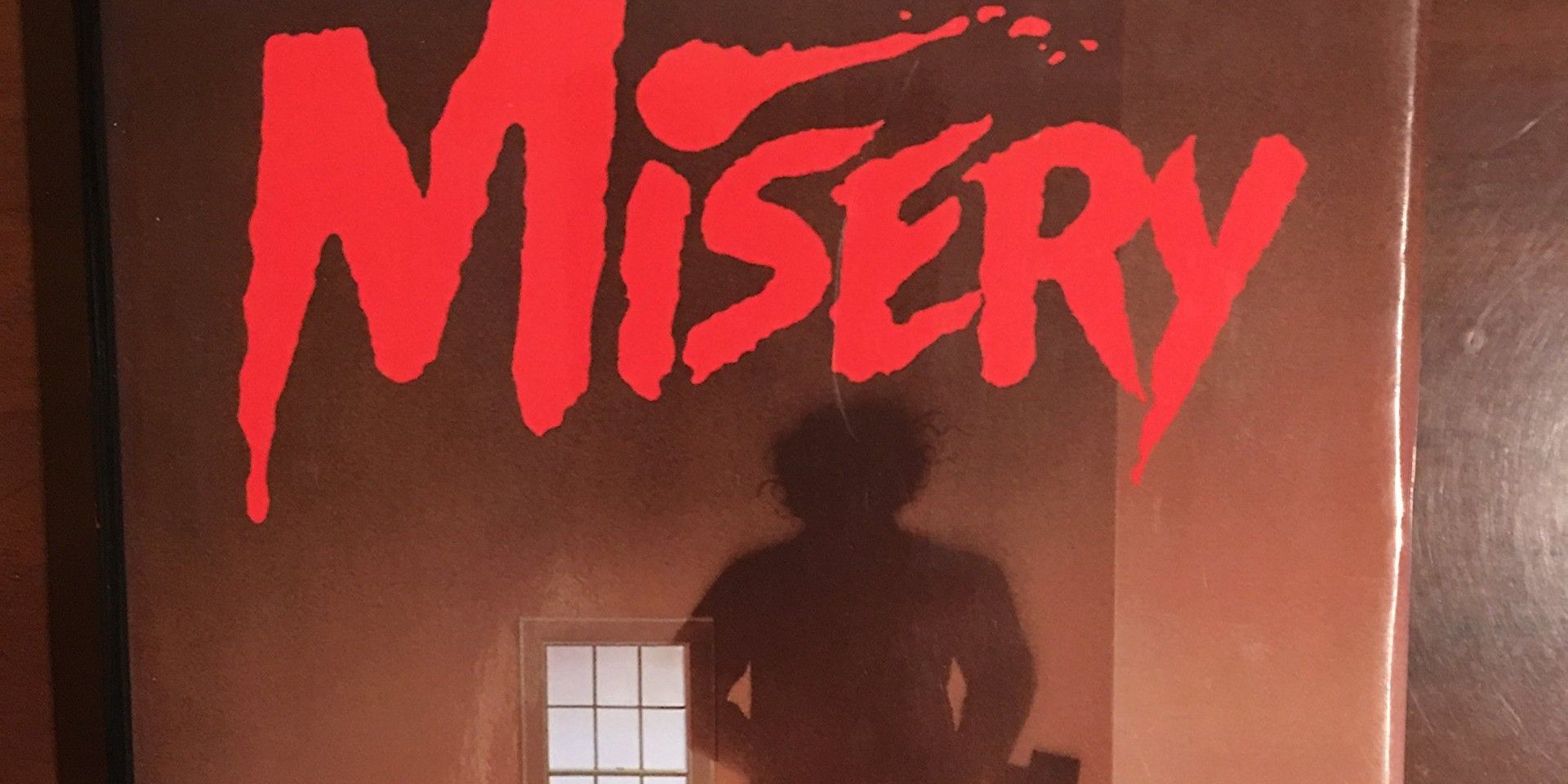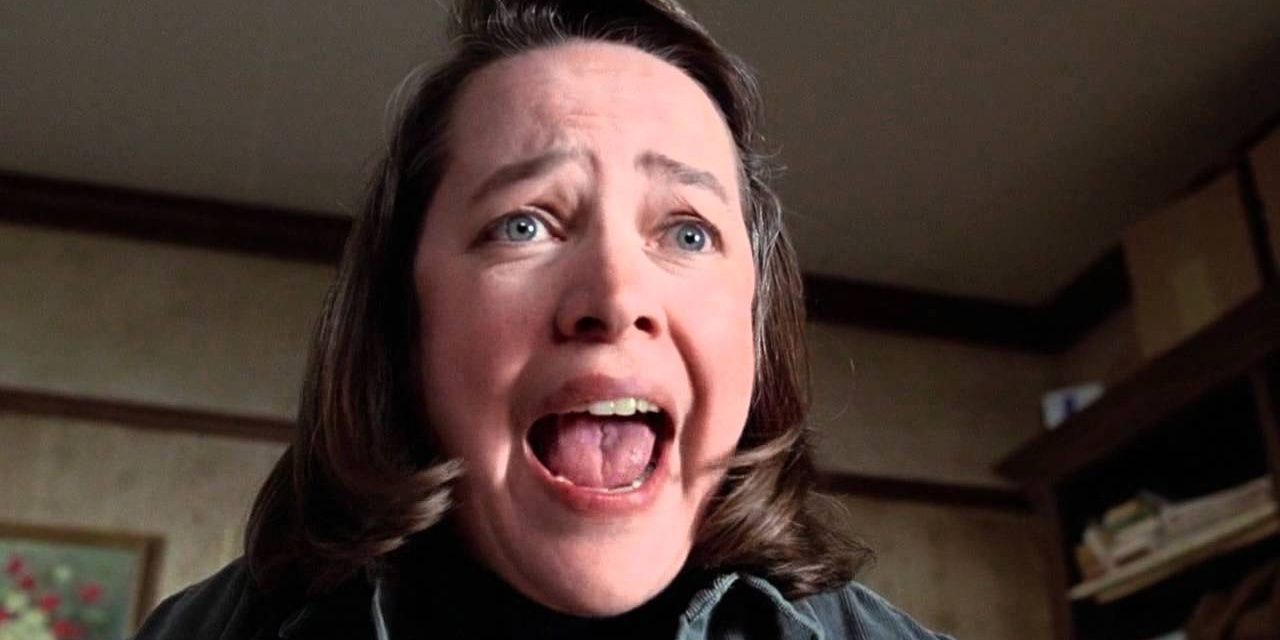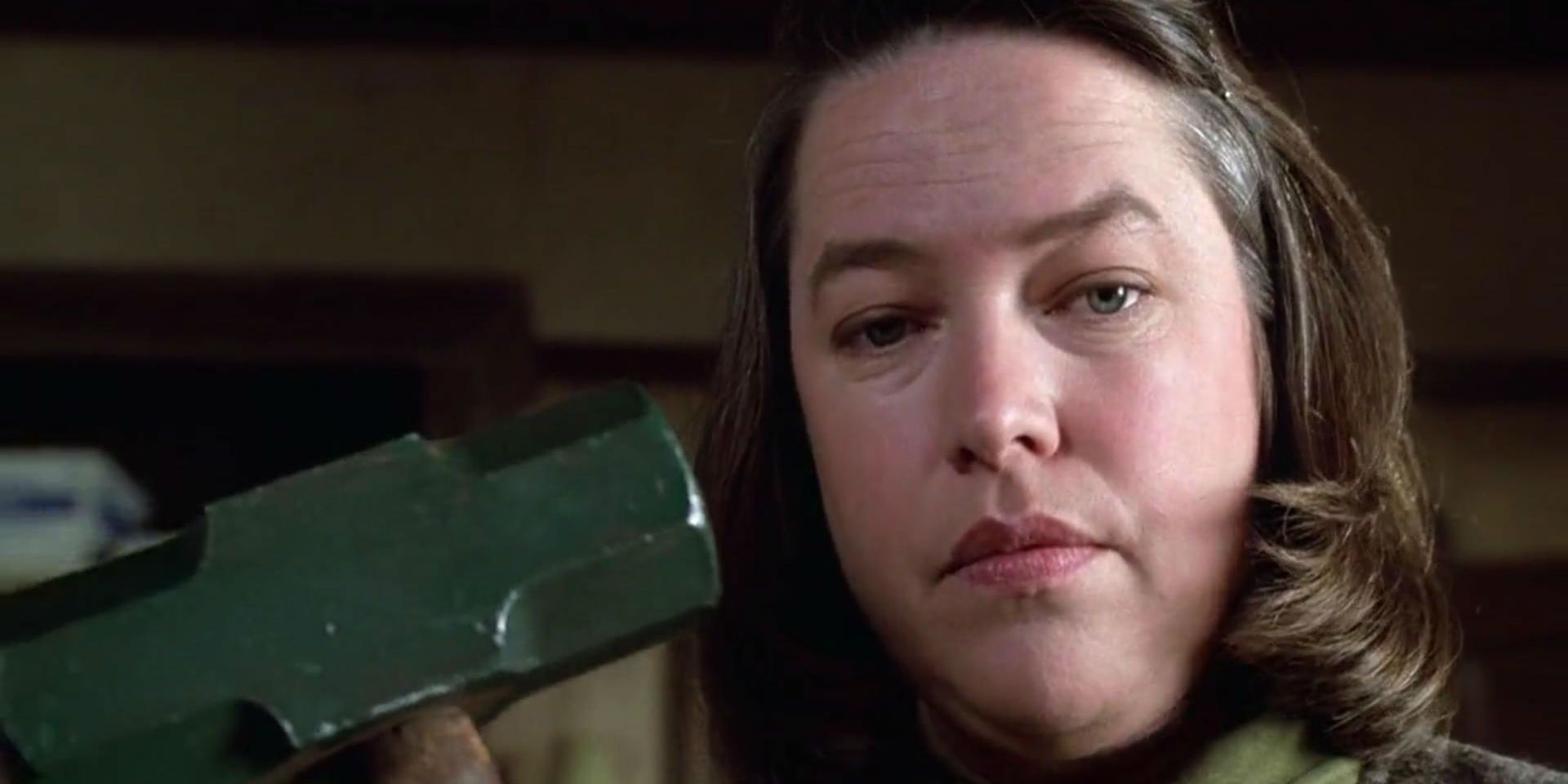Another entry to the exceptionally long list of Stephen King adaptations turned into exceptionally good films; Misery is one of his darkest works. The Rob Reiner directed film came out just three years after the 1987 book and has endured as one of the finest recreations of a King story ever made.
Despite the fact that there are a fair few differences that allow us to explore the process of making a novel into big-screen material, Misery is actually often seen as one of the most faithful King adaptations.
The Sledgehammer
This is the big one. The masterful, gruesome, and horrifying set-piece the film is building up to the whole time is a moment most viewers have to turn away from. The crazed Annie Wilkes ends up so paranoid that she uses a sledgehammer to shatter Paul’s feet as he lays on the bed. The crunch of bone and agonized shriek of pain have remained haunting for thirty years.
In the book, she uses an ax to cut one of his feet clean off, before moving to give a thumb the same treatment later on.
The Meeting
The way in which Annie and Paul meet is also rather different between the two versions. At first, things are pretty similar: Annie saves him and takes care of him before we find out how much she loves his work. In the book, it becomes clear to Paul that Annie isn’t as caring and sane as he had first thought.
In the film, it takes him far longer to realize. Rather than becoming almost immediately suspicious, it takes him a few days of comfort and an explosion of anger about the ending of his most recent book to realize what was happening.
The Actual Character Of Misery
With a specific run time to meet and an audience to keep entertained and in the room, a film can very rarely push a three-hour time limit. Misery has to cut certain world-building elements in order to keep the audience on their side, while a book can basically be as long as necessary.
As such, we learn a lot about the actual character of Misery from within Paul’s book series. This includes his own sense of gratefulness and hatred towards the character and her creation of his success and stilted career, as well as a lot of information about the actual plot of the book-within-a-book. The film doesn’t really go into any of this.
The Fire
In her rage against the ending of Paul’s book, Annie takes the ultimate action against it. She forces him to burn the entire manuscript. Now, this isn’t a world in which Paul has a backup saved to the Cloud; this is a manuscript written out once and once only on a typewriter.
Cleverly, the book version of the character only burns a stack of unrelated papers. The film version actually does destroy his entire novel.
The Power Of Writing
The way the film and book portray the concept of writing differs quite drastically. With all of its time spent depicting the claustrophobia of the room and Paul’s mental state, the book is able to portray the idea that Paul writes in order to keep himself relatively sane. It is sort of implied that without his continued writing, he wouldn’t have eventually been able to overpower Annie.
The film version pretty much portrays Paul’s writing as a necessity that he has to keep up in order to survive Annie, rather than an important part of his survival.
The Sheriff
A key scene from the book shows one of the only characters to appear aside from Paul and Annie being brutally murdered. He is a state trooper on the hunt for Paul himself, and when she realizes he knows Paul is in the house, she stabs him and runs him over with a lawnmower in an incredibly graphic scene.
The film version of this character is a sheriff who suffers a much less graphic death when he is shot in the chest with a shotgun.
Publishing The Book
As the book version of Paul didn’t actually burn his manuscript when Annie made him, he ended up getting out of the house will a completed book still in his possession. With his tormenter dead, he was able to publish the book in which Misery dies. It ends up being a global phenomenon and a best seller.
Of course, in the film, Paul really has lost his manuscript to the flame. He can’t publish it at all and instead publishes a book that helps him deal with the traumatic memory of his captivity, which still haunts him.
A Slightly Different Location
This particular difference doesn’t have much of an impact on the storyline at all, but it makes you wonder why it is there in the first place.
While both the film and book are set in Colorado, the actual place in which the book is set is Sidewinder, a fictional town common to many stories in the King universe. The location in the film is a real place called Silver Creek.
Annie’s Demise
While Annie does die in both the book and the film, the way she meets her end differs slightly in both. In the film, we see them fight until Annie cracks her head on the typewriter, and pretends to be dead. When she leaps back up, Paul is able to kill her with a pig statue.
The books show a similar thing happening to Annie as she hits her head on the typewriter, but rather than attacking him again and being killed, she climbs through a window in an attempt to get a chainsaw to kill him with. Before she can get to the chainsaw, it is her previous head injury that kills her.
The Horror
While it isn’t a plot-specific difference, something overarching that separates the film from the book is its use of horror. Stephen King is typically known for his supernatural style and setting, but Misery is so much more real, making it just that bit scarier.
The claustrophobia and tension of what might happen next keep it firmly on par with The Shining. Time constraints and visuals take the film away from horror and focus in on the psychology. It might be a brilliant film, but it’s hard to describe it as scary.


